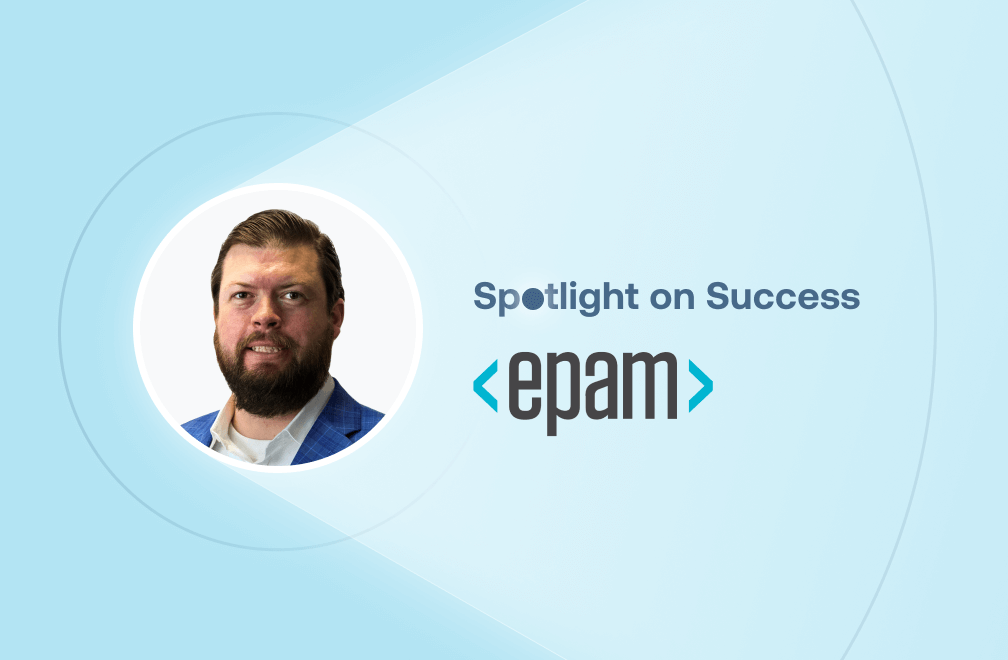
In our Spotlight on Success series, Doug Sasso, VP, Head of Global Audit of EPAM Systems, shares how his team is expanding their internal audit and SOX teams’ success with AuditBoard to support their ESG and sustainability goals. Founded in 1993, EPAM leveraged its advanced software engineering heritage to become the foremost global digital transformation services provider — leading the industry in digital and physical product development and digital platform engineering services. Hear how EPAM’s team leverages the power of AuditBoard’s integrated data collection, analysis, and benchmarking capabilities to gain a global view of risk across the organization, including:
- Leveraging AuditBoard’s ESG, SOXHUB, and OpsAudit solutions together to centralize ESG, audit, and SOX documentation in a single source of truth.
- Simplifying sustainability reporting by aligning topics against their current GRI framework, with plans to adopt TCFD and SASB in the future.
- Streamlining data and evidence collection across 50+ countries to ensure sustainability data is verified and audit-ready.
- Delivering more audits and more value to the business by adopting an agile approach to internal audit empowered by supporting technology.
Tell us a little about EPAM Systems, and some of the challenges you faced in your previous manual audit environment.
“EPAM is an IT services company. We have a background in software engineering and are working to combine software engineering and consulting to help our customers with their digital transformation, moving their businesses to a digital engagement environment, interacting with their customers, and helping them through their transitions.
Prior to AuditBoard, we didn’t have an audit management system. We weren’t moving from one platform to another, so the efficiency that we sought to gain — and ultimately did gain — with the solution was significant. We canvassed the landscape of tools that could enable internal audit. We ultimately landed with AuditBoard and felt confident, especially with the interactions that we had and some features that we asked for that were delivered immediately in the solution.”
Tell us about your ESG journey at EPAM, and how you see AuditBoard’s ESG solution supporting your goals.
“We’ve used OpsAudit and SOXHUB for several years now, and that influenced our goals as we thought about ESG, and [our decision to] mov[e] forward to adopt the ESG model as well. Internal audit’s involvement with ESG at EPAM started about two and a half years ago. We monitor and run enterprise risk management, so we’re monitoring risks through the process. We started to see that ESG was a risk that we wanted to put an internal audit lens on, so we started performing an internal audit to look at how EPAM was positioned and how we viewed our position. We did two things as part of that review. We took an outside-in look and looked at how we’re reflected in analyst reports and the consumption of our ESG data and story by stakeholders who are external to EPAM. We also took an internal look and interviewed internal stakeholders and asked them similar questions to what’s contained in analyst reports about the data that gets consumed.”
“The transparency in AuditBoard is going to make it very easy for us to drill down into underlying documents to support the reporting that we’ll do in our sustainability report. One example that’s relevant to most companies is how you report emissions data. A lot of that information comes from energy usage within our facilities, and that information has to be aggregated across 50+ countries and put somewhere. Verifying the reliability of that information could be a challenge without a system to enable it.“
“As we prepare for our sustainability report in 2023, we’re referencing multiple frameworks in that process. We’re looking at the GRI framework as a starting point, and then in the future TCFD and SASB frameworks to ensure that we have a comprehensive view of the topics that our stakeholders care about. One of the benefits of AuditBoard was that embedded within it are those different frameworks and the types of information and questions that we should be answering.”
How has AuditBoard helped enable your team to take an agile approach to internal audit?
“One of the key benefits that we have with AuditBoard is the ability to support our agile audit approach. The way that EPAM manages our internal audit plan is to create a draft plan, typically in December, and then add to that plan throughout the year. AuditBoard as a platform allows us to do that seamlessly. It gives us more efficiency when we’re starting new audits or completing audits, and allows us to complete those audits more timely — and the resulting efficiency means we’re able to deliver more audits and ultimately more value to the business.”

